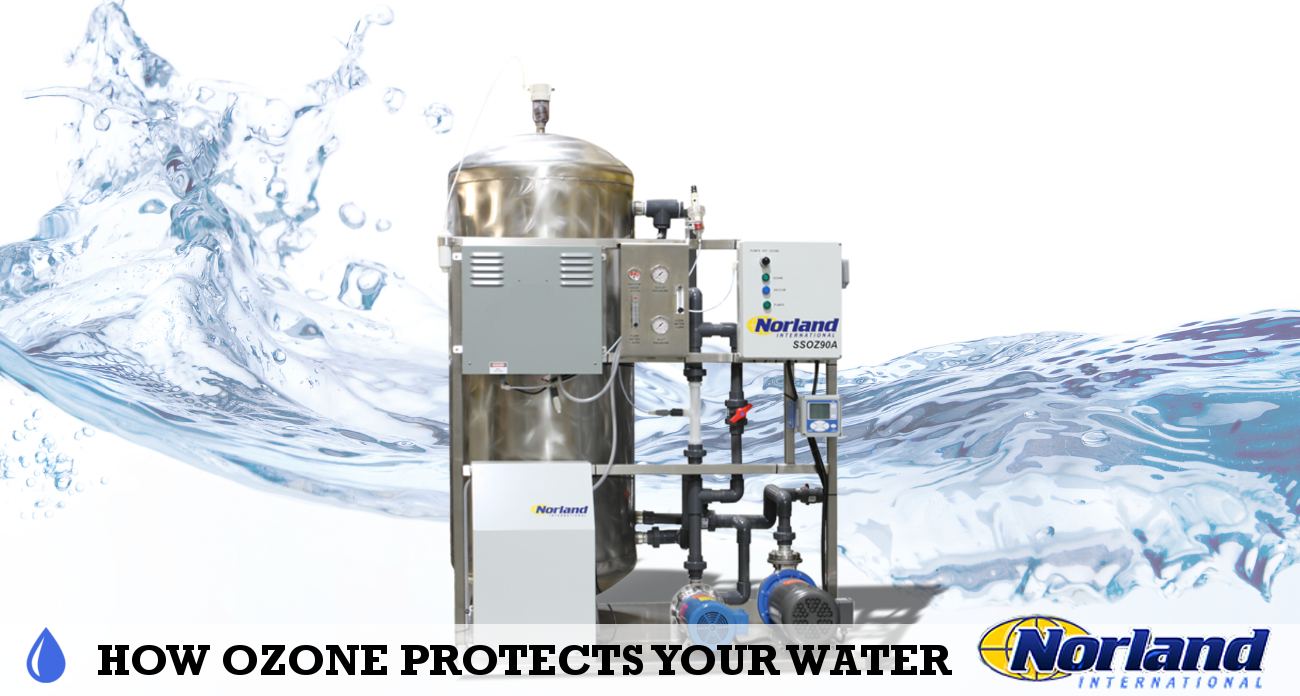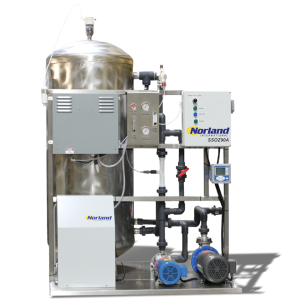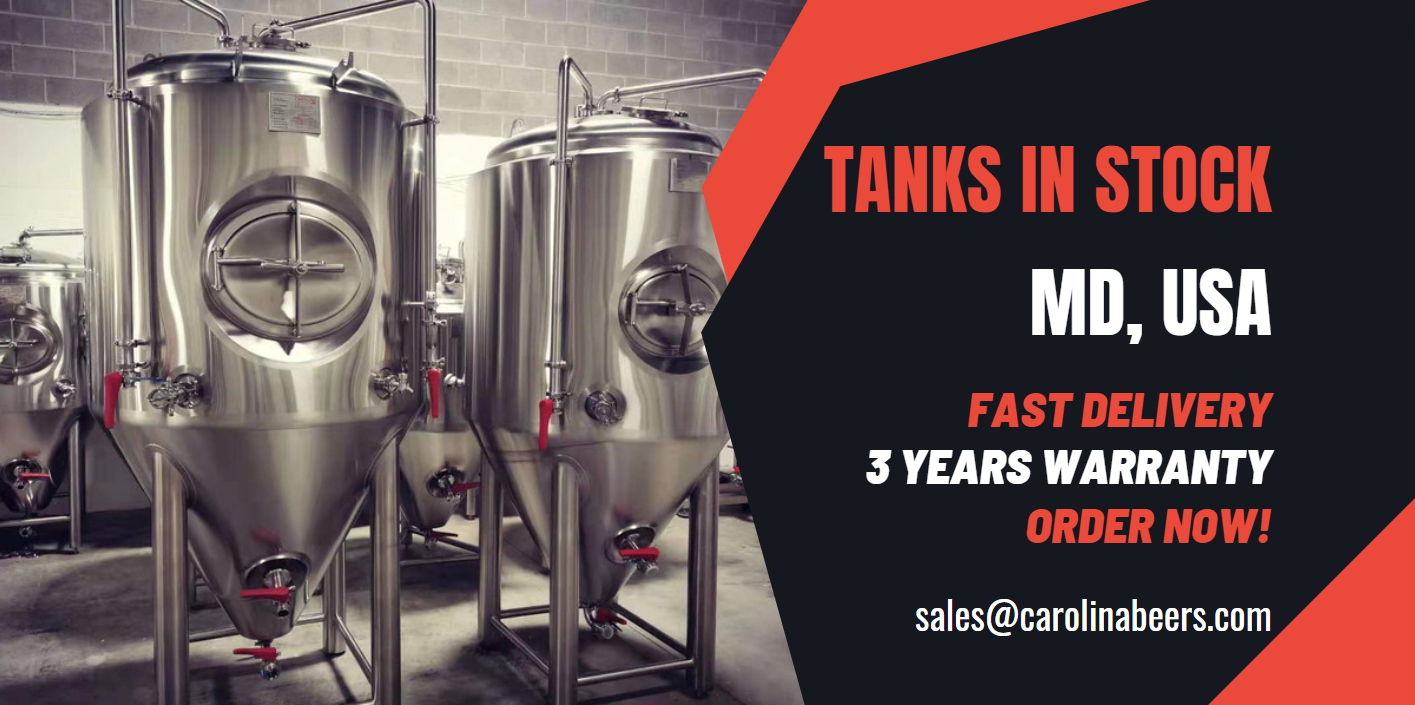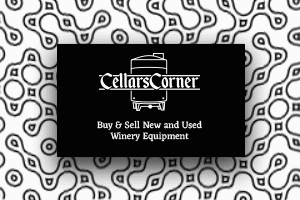
OZONE AS A DISINFECTANT
Keeping bottled water safe, tasting fresh
Ozone treatment is an effective disinfectant for water being used in bottled water operations. The process requires careful, precise operation and quality equipment to ensure bottled water is properly disinfected and tastes good through its shelf life.
The best system for introducing ozone into the final bottled water product depends on many factors, including the size of the operation, the type of water to be treated, the level of ozone required and the current or proposed bottling equipment. It is best to consult a company that deals with complete bottled water plant systems and that supplies complete integrated systems in order to obtain the best quality ozonated bottled water.
The bottled water industry has used ozone treatment for about 30 years to disinfect water before it is put into bottles. The industry has found that ozonation of product water in storage tanks and in the final water fill-stream provides consumers with a safe, fresh-tasting bottled water.
Ozone is a safe, efficient method for disinfecting the water against water-borne microorganisms and other bacteria that may remain following pretreatment methods. It also protects against any contamination that may be present in the bottling equipment, bottles and caps.
WHAT DOES OZONE DO?
Ozone (O3) is an unstable, color-less gas. It is a powerful oxidizer and a potent germicide. In fact, ozone possesses much higher disinfection capabilities than chlorine and other commonly used disinfectants.
Once generated, ozone takes just a short time to break apart and return to its natural form of oxygen (O2). As this process occurs, the free atom of oxygen seeks out and attacks any foreign particles in the water. This action virtually disintegrates bacteria or other organic matter, protecting the water from waterborne contamination.
Chief variables that determine the effectiveness of ozone in killing bacteria include contact time and initial ozone concentration achieved in the product water. Final ozone concentration residual depends on how much ozone is originally injected into the product water, contact time and the amount of ozone demand in the water.
Ozone treatment also provides longer store shelf life for bottled water, but without the unpleasant tastes and odors associated with untreated waters or water that has been disinfected with chlorine.
Ozone must be injected correctly to be safe and effective. Over-ozonating the water, for example, may lead to high levels of ozone (0.40 parts per million (ppm) or more) that will cause taste problems and reactions with the plastic in the plant piping and the bottle itself. Sometimes too much ozone or improperly injected ozone may allow some “outgas” into the air layer between the water and the cap. If the bottle is opened soon after bottling, the consumer may notice a metallic taste in the water caused by this ozone smell.
In recent years, the presence of bromide in some treated waters, especially spring or well water, has become a concern within the bottled water industry. Bromate is a suspected carcinogen at levels as low as 10 parts per billion (ppb). It is formed when the bromide ion is oxidized during the ozone disinfection process.
A few years ago, Coca-Cola’s Disdain bottled water operation in Kent, England, was forced to recall bottles because high levels of bromate (200 ppb) were found in its water. It is recommended that anyone concerned about bromate in bottled water manufacturing visit the International Bottled Water Association website for information concerning this issue.
Additionally, final product water purified by reverse osmosis (RO) can cause some problems with ozonation levels if the RO water still contains TriHaloMethanes (THMs). THMs are byproducts of the chlorination process in municipal waters and cannot be removed by the RO process. The THMs will be oxidized and removed by the ozone treatment but, in the process, will use up the ozone and lower the residual levels of ozone in the final product water. To prevent the problem or eliminate the need for a larger ozone system, feedwater must be tested for THMs and, if present, removed by carbon filtration before or after the RO process.
Many, if not all, of these benefits and drawbacks associated with ozonation are directly related to the quality of the ozonation equipment and method used. The better the ozone system used, the better the results.
THE OZONATION PROCESS
The bottled water industry uses several methods for introducing ozone into the final product water before bottling. The three main methods used are batch processing, inline atmospheric contacting and inline pressure contacting. Each type has its strengths and weaknesses. Many potential problems can be prevented if you choose the right method for your particular situation. Note that the following method titles are the author’s descriptions and are not official industry designations.
Batch processing. Batch processing is usually best for small bottling operations that do not require large amounts of processed water.
The batch processing method starts by ozonating a large storage tank until the desired ozone level is reached. Two possible methods for tank ozonating are using a small circulation pump, a small ozone generator and a venturi injector to create and entrain the ozone gas into the water stream flowing into the tank, or bubbling the ozone into the tank water with a diffusion stone.
When the target ozone level is reached, a separate pump delivers the ozonated water to the filling operation. The tank is ozonated continually throughout the operation to maintain an acceptable ozone level by whichever batch processing method is being used.
Inline atmospheric contacting. This ozonation method draws product water out of the storage tanks with a pump and delivers the water to a large atmospheric stainless steel contact tank. Then the water is either ozonated by venturi injection assembly in line with the water flow or by ozone bubbling into the contact tank with a diffusion stone. In the contact tank, the water requires a specified length of contact time with the ozone to be treated effectively. The water is then delivered directly to the bottle filler by another pump. This process is considered real time in that as soon as the contact tank fills and both pumps are delivering water at the same flow rate, the bottle filler can operate continuously.
Many large bottled water companies currently use this form of ozonation. It is important to have the appropriately sized contact tank, especially if the ozone is bubbled into the tank. This process may also require considerable fine-tuning to balance the pumps. This system generally requires an ozone monitor/controller unit to ensure proper ozone levels.
Inline pressure contacting. This method of ozonation, also considered a real-time system, can be handled in one of two ways.
The first method uses one pump to deliver the water from the storage tanks through a venturi injection assembly with a large amount of bypass into a pressurized contact tank, then out to the bottle filler. This requires a return line back from the filler to the storage tanks. This technique is ideal for small bottling operations and for small fillers that do not require high pressures. If sized correctly, an ozone monitor/controller may not be needed.
The second method uses two pumps—a main pump to draw the product water out of the storage tanks and to push the water through the contact tank and into the filler, and a smaller pump to boost some of the pressurized water through a venturi injector assembly to draw the right amount of ozone into the water stream. The two streams of water merge and mix together in the pressurized contact tank on their way to the filler. This method is also called side-stream ozonation. If a correctly sized system is used, an ozone monitor/ controller may not be needed; however, it is best to have one to ensure that the correct level of ozone is supplied to the filler. This is a good method for intermediate-sized bottling operations.
RECOMMENDED OZONE EQUIPMENT AND METHOD
The key factors in an effective ozonation process are the equipment and the method used to introduce ozone into the water. The following equipment is recommended to create ozone and to inject it into the product water:
Oxygen concentrator. A good pressure swing adsorption system is highly recommended. This unit removes nitrogen from the air stream and delivers a +90% dry oxygen stream to the ozone generator for higher ozone concentration.
Ozone generator. Also recommended is a good high-frequency corona discharge unit. Such units are capable of producing ozone concentrations in the air stream ranging from 4 – 6% by weight. The ozone is created as the oxygen stream travels through the ozone generator’s corona discharge dielectric cell. The proper electrical charge with the right frequency will create a high quality ozone concentration. Some equipment manufacturers do not rate their generators accurately. Unfortunately, there are no generally recognized ozone industry standards that are uniformly applied to all ozone manufacturers and their equipment.
Venturi injector. A good, properly sized venturi-type injector is a must to ensure that small microsized bubbles are formed as the ozonated stream of air is sucked into the product water stream.
A well-designed assembly is capable of entraining the ozone into the water with an efficiency of 95% or better.
Contact tank. A properly sized contact tank is needed to allow more gas into the solution and to permit adequate contact time for the ozonated water to oxidize contaminants, disinfect the water and release any excess gas that did not go into the solution.
Visit www.norlandintl.com or call 402.441.3737 for more information!




